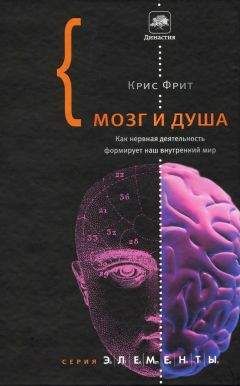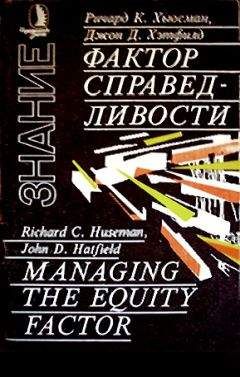Richard Bandler - Frogs into Princes: Neuro Linguistic Programming

Скачивание начинается... Если скачивание не началось автоматически, пожалуйста нажмите на эту ссылку.
Жалоба
Напишите нам, и мы в срочном порядке примем меры.
Описание книги "Frogs into Princes: Neuro Linguistic Programming"
Описание и краткое содержание "Frogs into Princes: Neuro Linguistic Programming" читать бесплатно онлайн.
What People are saying about this book:
"A readable, practical, and entertaining book about a challenging, original, and promising new discipline. I recommend it."—Dan Goleman, Associate Editor of Psychology Today.
"NLP represents a huge quantum jump in our understanding of human behavior and communication. It makes most current therapy and education totally obsolete."—John O. Stevens, author of Awareness and editor of Gestalt Therapy Verbatim and Gestalt is.
"This book shows you how to do a little magic and change the way you see, hear, feel, and imagine the world you live in. It presents new therapeutic techniques which can teach you some surprising things about yourself."—Sam Keen, Consulting Editor of Psychology Today and author of Beginnings Without End, To a Dancing God, and Apology for Wonder.
"How tiresome it is going from one limiting belief to another. How joyful to read Bandler and Grinder, who don't believe anything, yet use everything! NLP wears seven-league-boots, and takes 'therapy' or 'personal growth' far, far beyond any previous notions."—Barry Stevens, author of Don't Push the River, and co-author of Person to Person.
"Fritz Perls regarded John Stevens' Gestalt Therapy Verbatim as the best representation of his work in print. Grinder and Bandler have good reason to have the same regard for Frogs into Princes. Once again, it's the closest thing to actually being in the workshop."— Richard Price, Co-founder and director of Esalen Institute.
Having total sensory experience is a life-long project, and there isn't any limitation to it as far as I know. I now see things, hear things and get information tactually that two years ago would have seemed like ESP to me. That's a statement about my willingness to commit some time and energy to training myself to refine the distinctions I make between internal and external realities, the refinements I can make in every sensory channel, and in every internal representational system.
A lot of our training in our ability to make visual distinctions we got from Milton Erickson, He is one of the most exquisite visual detectors in the world. He can see things that really are "extra-sensory" for other people, but they are there, and they are coming in through the same senses. In the exercise we did, many of you called me over for assistance, saying "Well, this person doesn't make any eye movements." And you finally admitted "Well, there's some slight movement of the eyes." When you say something is slight, that is a statement about your ability to detect it, not about what's going on with the other person.
It's like "resistance." If therapists would take "resistance" as a comment about themselves instead of their clients, I think the field of psychotherapy would develop at a faster rate. Whenever a client "resists," it's a statement about what you are doing, not about what they are doing. Out of all the ways that you've attempted to make contact and establish rapport, you have not yet found one that works. You need to be more flexible in the way you are presenting yourself, until you get the rapport response you want.
What we would like to do next is to offer you an exercise to increase your sensory experience, and to distinguish between sensory experience and hallucination. This exercise has four parts:
Experience vs. Hallucination Exercise:
Part I
We want you to sit in groups of three. One of you we'll call A, one B, and one C. A, your job is detection. B, your job is to practice experiencing different kinds of experience. C is simply an observer, and can also help A and B keep track of what to do next. B, you select, without mentioning anything verbally, three different experiences that you had which were very intense experiences. They can be from any part of your life, but make them distinctive, one from the other; don't take three similar occasions. You can just identify them by dropping inside and finding representative examples, and simply number them one, two, and three.
Then hold hands with A and announce "one." Then go internal, drop out of sensory experience, go back to that time and place, and have that experience again without any overt verbalization. Take a minute or two or three to relive that experience fully…. Then announce "two" and relive it…. Then announce "three" and relive that....
Now there is one incredibly important factor. For those of you who are very visual, it will be imperative that you do not see yourself there, but see what you saw when you were there.
For example, close your eyes and see yourself from above or the side somewhere, riding on a roller coaster, just about to go down that first big drop.... Now step into that image of yourself inside the roller coaster and see what you would see if you were actually there riding it. Those are very different experiences. The kinesthetics come in profoundly once you break the dissociation of seeing yourself over there, and put your perceptual position inside your body on the roller coaster.
As you go back and find these three experiences and re-experience them, it is important that you do not do it dissociated. You may begin by seeing yourself; then get inside the picture. When you are inside the picture and you feel the experience in your body again as you did before, you begin to squeeze A's hand, thereby cuing them tactually that you are now having that experience.
A, your job is simply to observe the changes in B, as s/he goes through the three experiences. I want you to watch skin color changes, size of lower lip, breathing, posture, muscle tonus, etc. There will be many profound changes in B that you can see visually as B goes through this experience.
Part 2
B will do exactly the same thing as in Part 1: s/he will announce "one" and re-experience it, then "two" and "three."But this time A will not only watch the changes but describe them out loud. C's job is to make sure that all the descriptions that A offers are sensory-based descriptions: "The corners of your mouth are rising. Your skin color is deepening. Your breathing is high and shallow and increasing in rate. There's more tension in your right cheek than your left." Those are descriptions that allow C—who is watching as well as listening to your description—to verify, or not, what in fact you are claiming. If A says "You're looking happy; now you're looking worried," those are not sensory-based descriptions. "Happy" and "worried" are judgements. C's job is to make sure that A's descriptions are sensory-based, and to challenge any utterance that is not sensory-based.
Part 3
This time B goes into one of the three experiences without identifying it by number. You just pick one of the three and go into it. A sits there, again observing B, saying nothing until s/he finishes that experience. And then A, you tell B which experience it was: "one," "two," or "three." B continues to run through those three experiences in any order other than the original order, until A is capable of correctly naming which experience you are having. If A can't do it the first time through, simply start over again. Don't tell them which one was which, or that what they thought was number one was really number three; just tell them to back up and start over again. It's a way of training your senses to be acute.
Part 4
This time B goes into any one of the three experiences again and A hallucinates and guesses, as specifically as s/he can, what the content of that experience is. And believe me, you can get very specific and very accurate.
In parts 1, 2, and 3 we ask you to stay in sensory experience. In part 4 we're asking you to hallucinate. This is to make a clean distinction between sensory-based experience and hallucination. Hallucination can be a very powerful, positive thing. Anybody who has ever done a workshop with Virginia Satir knows that she uses hallucination in very powerful and creative ways, for instance in her family sculpting. At some point after she has gathered information she'll pause and sort through all the visual images that she has, preparatory to sculpting or making a family stress ballet. She will change the images around until it she puts them on the family by sculpting them. That's a case where hallucination is an integral part of a very creative and effective process. Hallucination isn't good or bad; it's just another choice. But it's important to know what you are doing. OK. Go ahead.
* * * * *
All right. Are there any comments or questions about this last exercise we did? Some of you surprised yourselves by the guesses you made, right? And others of you scored zero.
Whether you did well or not is really irrelevant. Either way, you got important information about what you are able to perceive, and whether or not what you hallucinate has any relationship to what you perceive.
You can take the training we're giving you and you can notice as you are communicating with a client or a loved one that the responses that you are getting are not the ones that you want. If you take that as an indication that what you are doing is not working and change your behavior, something else will happen. If you leave your behavior the same, you will get more of what you are already getting. Now, that sounds utterly simple. But if you can put that into practice, you will have gotten more out of this seminar than people ever get. For some reason, that seems to be the hardest thing in the world to put into practice. The meaning of your communication is the response that you get. If you can notice that you are not getting what you want, change what you're doing. But in order to notice that, you have to clearly distinguish between what you are getting from the outside, and how you are interpreting that material in a complex manner at the unconscious level, contributing to it by your own internal state.
The exercise you just did was essentially limited to one sensory channel. It was a way of assisting you in going through an exercise in which you clean up your visual input channel. You also get some kinesthetic information through holding hands. You can do it auditorily as well, and also kinesthetically. You can generalize that same exercise to the other two systems. If you are going to do it auditorily, A would close his eyes. B would then describe the experience without words, just using sounds. The tonal and tempo patterns will be distinctive and since A's eyes will be closed, all he has is the auditory input.
Or you could just think about the experience and talk about cooking lunch. That's the way couples often do it with one another. He makes a picture of his wife having an affair and then they talk about going camping, right? And he goes (angrily) "Yeah, I'd really like to go with you. I think we'd have a good time. I'm going to bring the ax so I can chop up some firewood."
Another thing couples do is fight in quotes. Do you know about quotes? Quotes is a wonderful pattern. If any of you have clients who work at jobs and have resentment for their bosses or fellow employees, but who can't really express it because it's inappropriate, or they might get fired or something, teach them the pattern of quotes in language. It's marvelous because they can walk up to their employer and say "I was just out on the street and this man walked up to me and said 'You're a stupid jerk.' And I didn't know what to say to him. What would you do if somebody walked up to you and said' You’re a jerk.? Just right out on the street, you know."
People have almost no consciousness of any meta-levels if you distract them with content. Once at a conference I talked to a large group of psychologists who were pretty stuffy and asked a lot of dumb questions. I told them about quotes as a pattern. Then I said for example—I even told them what I was, doing—Milton Erickson once told me a story about a time he stayed at a turkey farm, and the turkeys made a lot of noise and kept him awake at night. He didn't know what to do. So finally one night he walked outside—and I faced all those psychologists out there—and he realized he was surrounded by turkeys, hundreds of turkeys everywhere. Turkeys here, and turkeys there, and turkeys all over the place. And he looked at them and he said "You turkeys!"
There were a couple of people there who knew what I was doing and they absolutely cracked up. I stood on the stage in front of these people who were paying me a fortune and I went" You turkeys!" They didn't know what I was doing. They all sat there nodding seriously. If you are congruent, they will never know. If you feed people interesting content, you can experiment with any pattern. As soon as I said "I'm going to tell you a story about Milton" everybody went "content time" and that was all it took.
In the middle of telling the story, I even turned around and laughed at the top of my lungs. And then I turned back and finished it. They just thought it was a weird behavior, because I laugh a lot. Or I could have made the laughing part of the story. "Milton turned around and laughed." At the end of the day all these people came up to me and said "And I want to tell you how important this has been to me" and I said "Thank you. Did you hear the story about Milton? I don't want you to think that it's about your
You can try any new behavior in quotes and it won't seem to be you doing it. Quotes gives you a lot of freedom to experiement with gaining flexibility, because it means that you can do anything. I can go into a restaurant and walk up to a waitress and say "I just went in the bathroom and this guy walked up to me and said 'Blink,'" and find out what happens. She'll blink, and I'll go "Isn't that weird?" and walk away. It wasn't me, so I didn't have to worry about it. It's a big piece of personal freedom; you are no longer responsible for your own behavior because it's "someone else's behavior."
When I was going to psychiatric meetings and stuff, I would walk up to someone and say "I was just in a conference with Dr. X, and he did this thing I've never seen anyone do before. He walked up to this person, lifted up his hand like this, and said 'Look at that hand.'" Then I'd do a fifteen or twenty minute trance induction and put the person into a trance. Then I'd slap him in the stomach so he came out, and say "Isn't that a weird thing for him to do?" He would go "Yeah, that's a really weird thing for him to do. He shouldn't do things like that." And I'd go "I would never do anything like that. Would you?" And he'd say "No!"
Quotes also works great if you're doing therapy with a family that fights and argues and won't listen, because you can lean forward and you can say "I'm so glad you're such a responsive family, because with the last family that was here I had to look at each and every person and say 'Shut your mouth.' That's what I had to tell them. "It reminds me of a group we did in San Diego; there were about a hundred and fifty people and we told them "The next thing that we'd like to tell you is how couples often fight in quotes."
"Well, if you were to tell me that, you know what I would say to you?"
"Well, if you told me to do that, I'd just tell you to go to hell!"
"Well, listen, if you ever said that to me I'd reach right over and..." The trouble is they usually lose quotes, and actually get into a fight.
Most of you have heard quotes in family therapy. You ask "How did it go?" If they stumble on reporting an argument, they'll start in quotes and then they'll be into it again! All their non-verbal analogues will support it. Quotes is a dissociative pattern, and when the dissociation collapses, the quotes go.
Grief is usually a similar pattern. What's going on in the grief-stricken person is this: they make a constructed visual image of being with the lost person. They are seeing themselves with the loved one who is now dead or gone, unavailable somehow. Their response called "grief or "sense of loss" is a complex response to being dissociated from those memories. They see their loved one and themselves having a good time, and they feel empty because they are not there in the picture. If they were to step inside the very same picture that stimulates the grief response, they would recover the positive kinesthetic feelings of the good experiences they shared with that person they cared very much about. That would then serve as a resource for them going on and constructing something new for themselves in their lives, instead of a trigger for a grief response.
Guilt's a little different. There are a couple of ways to feel guilty. One of the best ways to feel guilty is to make a picture of the response on someone's face when you did something that they didn't like. In this case you are making a visual eidetic picture. You can feel guilty about anything that way. However, if you step outside the picture, in other words reverse the procedure that we use with grief, what happens is that you will no longer feel guilty, because then you literally get a new perspective.
Подписывайтесь на наши страницы в социальных сетях.
Будьте в курсе последних книжных новинок, комментируйте, обсуждайте. Мы ждём Вас!
Похожие книги на "Frogs into Princes: Neuro Linguistic Programming"
Книги похожие на "Frogs into Princes: Neuro Linguistic Programming" читать онлайн или скачать бесплатно полные версии.
Мы рекомендуем Вам зарегистрироваться либо войти на сайт под своим именем.
Отзывы о "Richard Bandler - Frogs into Princes: Neuro Linguistic Programming"
Отзывы читателей о книге "Frogs into Princes: Neuro Linguistic Programming", комментарии и мнения людей о произведении.










